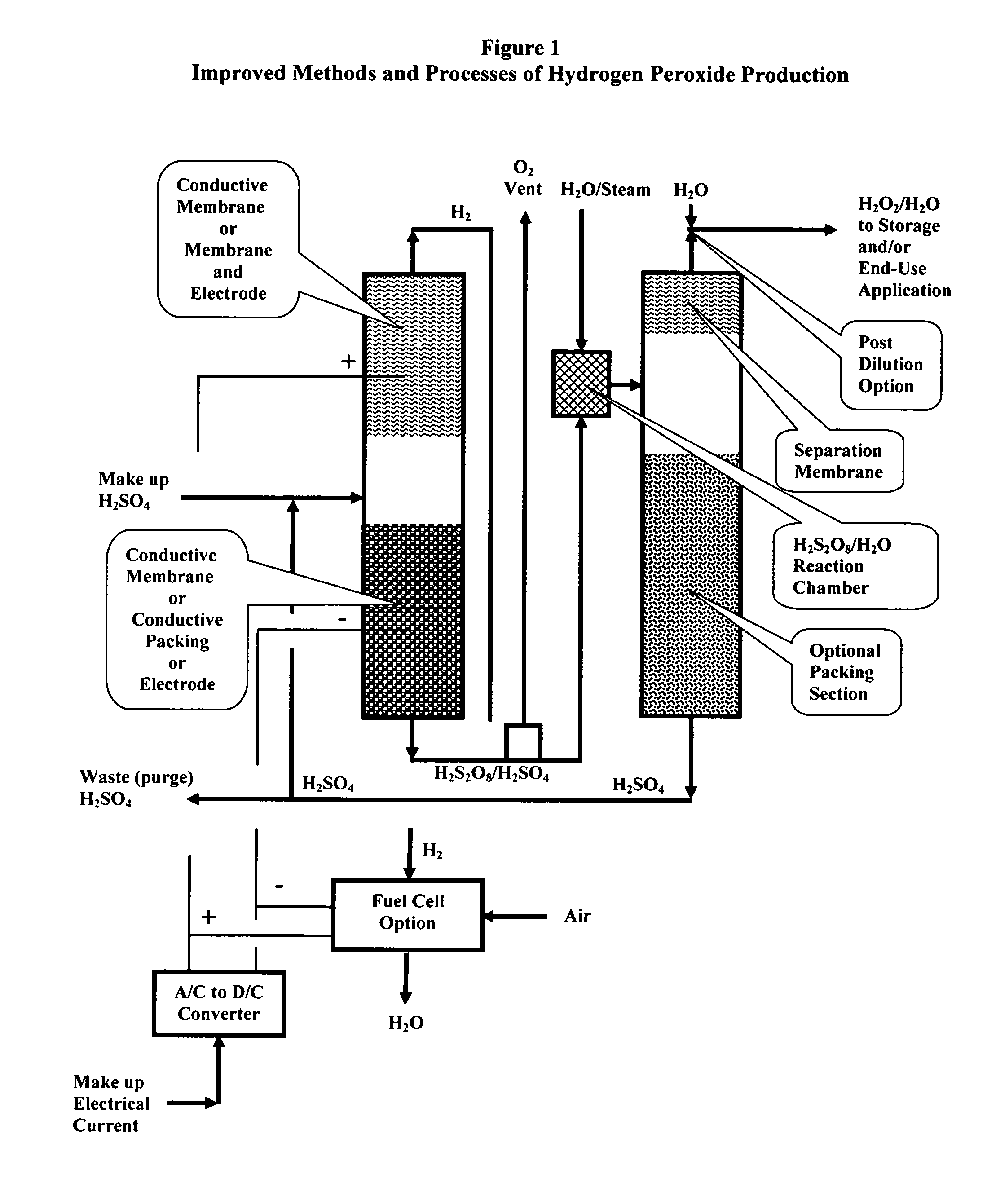Methods and processes of hydrogen peroxide production
- Summary
- Abstract
- Description
- Claims
- Application Information
AI Technical Summary
Benefits of technology
Problems solved by technology
Method used
Image
Examples
example 2
[0041] The resultant solution from Example 1 is then slowly reacted with water until the solution becomes clear again. Once clear, the solution is heated to boiling, which occurs at about 100.degree. C. and increases in intensity at about 150.degree. C. The distilled vapors are obviously a combination of water and hydrogen peroxide. The remaining liquid has a pH of less than 1.0, being sulfuric acid.
example 3
[0042] Example 2 is repeated. This time two flask openings are sealed, each sealed with a glass stopper. A Teflon tube is placed with one end on the third flask opening and the other end of the hose in a beaker of water. The flask is heated to 155.degree. C. and boiled until boiling stops. The resultant distillate / water mixture is then poured on a pair of old leather shoes. An exothermic reaction takes place wherein, the shoes begin to smoke. The exothermic reaction on leather proves the resultant aqueous solution to contain hydrogen peroxide.
PUM
 Login to View More
Login to View More Abstract
Description
Claims
Application Information
 Login to View More
Login to View More - R&D
- Intellectual Property
- Life Sciences
- Materials
- Tech Scout
- Unparalleled Data Quality
- Higher Quality Content
- 60% Fewer Hallucinations
Browse by: Latest US Patents, China's latest patents, Technical Efficacy Thesaurus, Application Domain, Technology Topic, Popular Technical Reports.
© 2025 PatSnap. All rights reserved.Legal|Privacy policy|Modern Slavery Act Transparency Statement|Sitemap|About US| Contact US: help@patsnap.com

